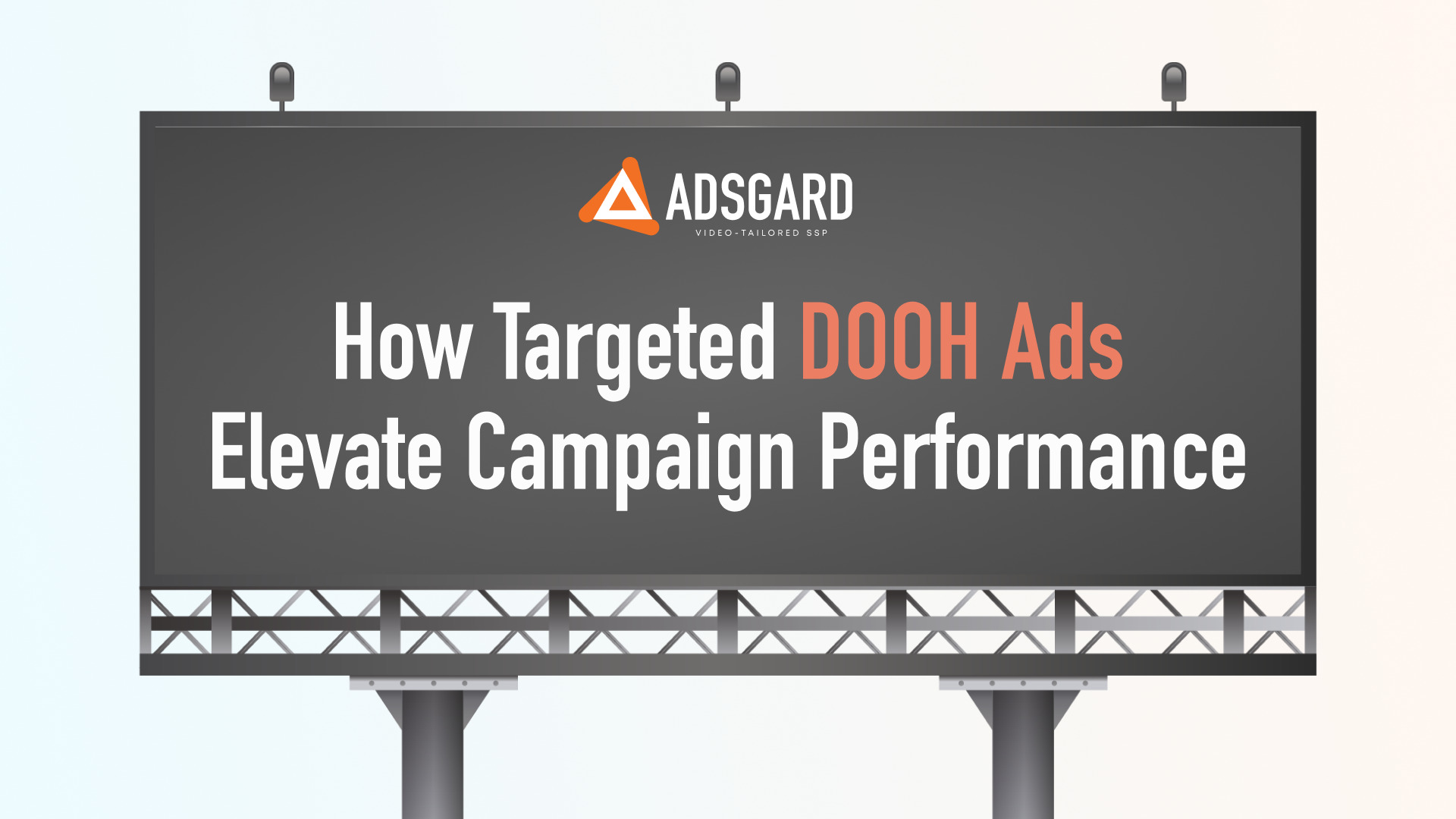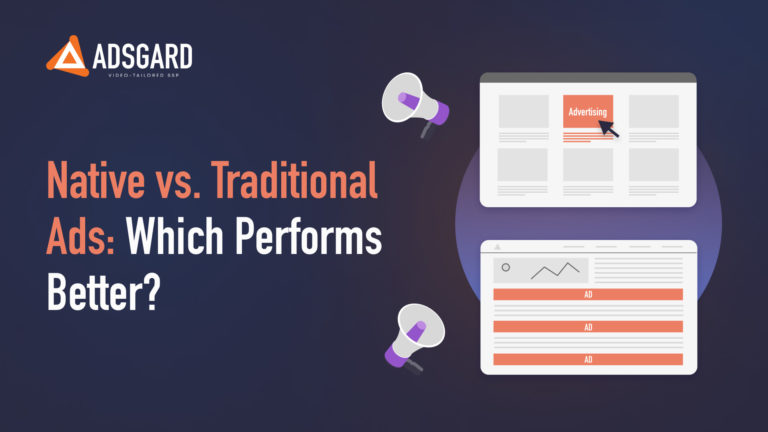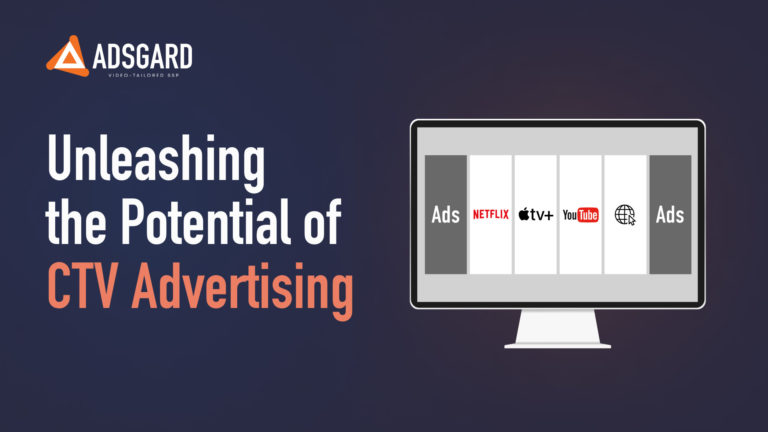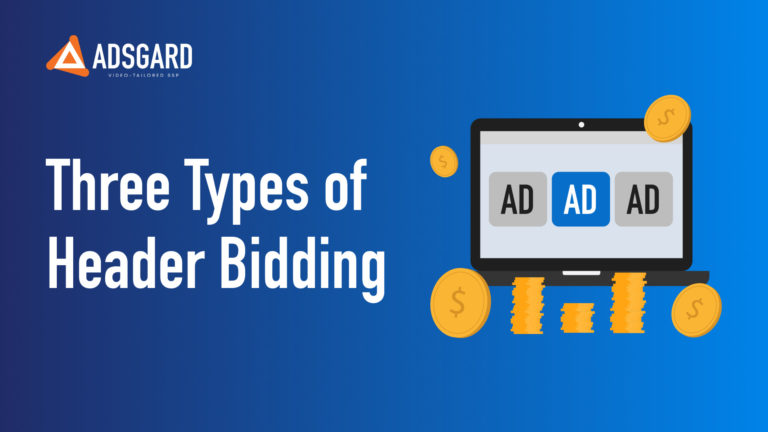
With its data-driven and automated approach, programmatic advertising is making its way into offline advertising, marking a significant shift in the advertising landscape. As technology advances, advertisers continuously discover inventive methods to connect online and offline channels seamlessly, enhancing the overall customer experience.
Programmatic technologies are integrated with digital out-of-home (DOOH) advertising, transforming static billboards into dynamic, context-aware displays. DOOH screens can now change advertisements based on real-time factors, such as weather conditions, traffic flow, or even the demographics of the passersby, ensuring that they deliver the right message to the right audience at the right time.
The gradual penetration of programmatic into offline advertising represents a promising fusion of data-driven targeting and the real-world impact of traditional marketing. Let’s start by looking at what DOOH is.
What Do We Mean By DOOH?
Digital out-of-home (DOOH) advertising is a form of advertising that utilizes digital displays and screens in public spaces to deliver targeted and dynamic content to viewers. Unlike traditional out-of-home (OOH) advertising, which includes static billboards, posters, and signage, DOOH advertising leverages digital technology to display ads, videos, or interactive content.
Various locations feature DOOH screens, including shopping malls, airports, train stations, bus stops, street furniture, stadiums, and other high-traffic areas. These screens come in different sizes and formats, ranging from small digital panels to large LED billboards, and businesses can place them indoors and outdoors.
It’s essential to differentiate between DOOH and programmatic DOOH, despite being displayed on digital billboards. In direct sale DOOH, media owners offer ad space to advertisers, and the buying process involves manual arrangements and transactions. On the other hand, programmatic DOOH automates the ad buying process through a real-time bidding algorithm. The system automatically places bids and assigns the winning ad to the DOOH ad slot. This automated buying process is the core feature of programmatic DOOH campaigns.
Benefits Of Programmatic DOOH For Advertisers And Agencies
Programmatic DOOH has emerged as a revolutionary strategy in the ever-changing advertising landscape, offering numerous advantages to brands aiming to engage their target audiences in the physical world.
The primary benefits of programmatic DOOH include the following:
- First-Party Data Utilization.
Advertisers can effectively leverage first-party data to target audiences offline.
- Swift Transactions.
Programmatic transactions occur in less than a millisecond, streamlining the ad placement and saving time for both media owners and buyers.
- Automated Buying Efficiency.
Automated buying processes save media owners and buyers time.
- Mid-Campaign Optimization.
Unlike traditional ad placement, programmatic DOOH allows advertisers to optimize campaigns and adjust real-time criteria.
- Diverse Purchasing Options.
Advertisers can acquire programmatic inventory through RTB, PMP, or guaranteed programmatic deals.
But these are not the only advantages of this method. With dynamic content, it delivers interactive and real-time-changing messages, engaging the audience. With data-driven approaches, DOOH platforms target specific groups based on foot traffic, weather conditions, and demographics, optimizing campaign effectiveness. Furthermore, DOOH provides robust measurement and analytics for data-driven decision-making, while interactive displays enhance engagement, creating a memorable advertising experience.
DOOH targeting
Traditional OOH advertising lacks precise audience targeting, but DOOH introduces targeting triggers for better audience reach. While programmatic targeting for desktop and mobile campaigns has achieved unprecedented precision with individual user screens, DOOH programmatic targeting is not as advanced due to the nature of digital screens not being designed for personal usage. Nonetheless, programmatic DOOH campaigns can still effectively reach specific audiences, as programmatic transactions can occur under certain conditions.
One of the primary methods of DOOH targeting is location-based targeting. Using geolocation data from smartphones and other devices, advertisers can display contextually relevant ads to the audience’s current location. For example, ads for a nearby store or restaurant can be shown to people nearby, increasing the chances of driving foot traffic and conversions. Moreover, DOOH platforms collect demographic data such as age, gender, and interests, enabling advertisers to tailor their content to resonate with specific audience segments.
Statistics from 2021 revealed that over 80% of advertisers planned to incorporate DOOH campaigns into their media mix in the following year. Unlike traditional out-of-home advertising that casts a wide net without precise targeting, DOOH targeting leverages various data sources and technologies to deliver relevant and personalized content to specific groups of viewers. Multiple conditions, ranging from simple ones like different times of the day to more complex triggers like current weather conditions (e.g., promoting socks during cold weather), can activate programmatic DOOH campaigns. Additionally, brands can repurpose content from online and mobile campaigns or leverage data on daily market performance to enhance their DOOH advertising.
To Sum Up
Targeted Digital Out-of-Home (DOOH) advertising is revolutionizing offline advertising by leveraging programmatic technologies. It transforms static billboards into dynamic displays, delivering real-time, context-aware ads based on weather, traffic flow, and demographics. DOOH utilizes digital screens in public spaces, offering a seamless and holistic customer experience. Programmatic DOOH campaigns automate the ad buying process through real-time bidding algorithms, providing numerous benefits for advertisers and agencies, such as utilizing first-party data, swift transactions, and mid-campaign optimization.
DOOH targeting involves location-based targeting using geolocation data, demographic segmentation, and various triggers, enabling advertisers to reach specific audiences effectively. With over 80% of advertisers planning to incorporate DOOH campaigns into their media mix, this data-driven and automated approach is an effective and engaging advertising strategy, providing relevant and personalized content to viewers.



